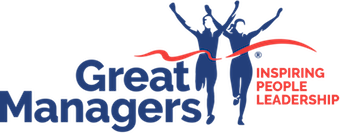How to Ask The Right Questions as A Manager
Knowing how to ask the right questions is at the heart of effective communication and is a very important part of the Great Managers toolkit.
You might have heard the expression “garbage in, garbage out”, usually used in relation to computer systems.
The same principle applies to communication and particularly questioning.
The quality of the question you ask determines the quality of the information you receive in return.
Questions can be productive or counter-productive; they can stimulate creativity or drain energy away. Questions can open us up and build trust, or they can cause defensiveness.
Using the right type of question for the situation can activate the pre-frontal cortex in the brain rather than the limbic system.
By using the right questions in a particular situation, you can improve a whole range of communications skills: for example, you can gather better information and learn more; you can build stronger relationships, manage people more effectively and help others to learn too. The right questions empower people – the wrong questions disempower them.
Skillful questioning needs to be matched by careful listening so that you understand what people really mean by their answers. Your body language and tone of voice also play a part and will influence the answers you get when you ask questions.
The better you become at asking effective questions, combined with your other skilful communication techniques and your self-awareness and self-management, the more consistently you and your team will accomplish your goals.
Types of Questions
Open and Closed Questions
A Closed Question usually receives a single word or very short, factual answer. For example, “Are you thirsty?” The answer is “Yes” or “No”; “Where do you live?” The answer is generally the name of your town or your address.
Closed questions are good for:
- Testing your understanding, or the other person’s: “So, if I get this qualification, I am more likely to get a promotion?”
- Concluding a discussion or making a decision: “Now we know the facts, are we all agreed this is the right course of action?”
- Frame setting: “Are you happy with the service from your bank?”
- Confirming: “So the meeting is at 9.30am on 6 July?”

Open questions elicit longer answers. They usually begin with ‘what’ and ‘how’. An open question asks the respondent for his or her knowledge, opinion or feelings.
“Tell me” and “describe” can also be used in the same way as open questions to get more information. Use questions that include the word “exactly” or “specifically” to probe further. Here are some examples:
- What happened at the meeting?
- How did you get the result you were after?
- Tell me exactly what happened next.
- Describe the circumstances in more detail.
- What specifically would you like to learn on this project?
Open questions are good for:
- Developing a conversation: “What did you do on your holiday?”
- Finding out more detail: “What else do we need to do to make this a success?”
- Finding out the other person’s opinion or issues: “What do you think about those changes?”
When faced with a challenge or when trying to resolve an issue, Great Managers often resort to Solution Focussed Questions

Solution-Focused Questions
Solution-focused questions:
- Are open-ended
- Focus on where we want to go and what we want more of
- Ask “what” or “how” instead of “why”
- Help people learn through the process of answering
- Are YOU oriented i.e. they focus on the person answering
- Give the person credit for knowing the answer, whether they do or not
- Are often multi-levelled
- Show that the manager is open and willing to hear their answers – whatever they may be
- Help leaders become better listeners
- Are framed to fit the situation and clarify what is wanted
- Help leaders continually look for ways to empower people and make them feel valued
We can choose between focusing on what is working and what we want more of, or we can concentrate our attention on analysing what is not working, what we don’t want – either way we get more of what we focus on.
When we tell people what to do and how to do it, there is a tendency to resist.
The ideas people will support most are the ones they come up with themselves. Asking people for their input encourages both creativity and buy-in. This is called a Solution-Focused Approach.







